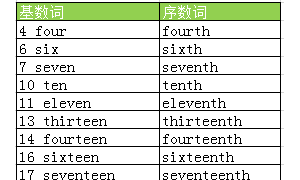在台北读书的 Bob 利用课余时间努力打工存钱,终于成功在暑假前往英国伦敦,开始为期一个礼拜的自由行。他计划第一天要去大英博物馆 (The British Museum) 当个文艺青年,然而昨晚在青旅兴奋到忘了给手机充电 …
平常在台北就常常搭错公车的路痴 Bob ,来到异地没有手机导航该如何是好?
(On a street in London)
(在伦敦街头)
Bob: (approaching a young man) Excuse me, may I ask for your help?
Bob:(走向一位年轻男子) 不好意思,可以请你帮我吗?
Man: Sure! How can I help you?
男子:当然!哪里需要我的协助?
Bob: I’d like to know how to get to The British Museum.
Bob:我想请问怎么去大英博物馆。
Man: You can take bus 68. It’s just 8 stops away.
男子:你可以搭 68 号公车。 8站就到了。
Bob: Great! Could you tell me where the bus station is?
Bob:太棒了!你可以告诉我公车站在哪里吗?
Man: Go straight ahead down London Road for 4 minutes, and you’ll see the bus stop on your left side. once you get off the bus at Russel Square Station, turn right at Russel Square and walk along the square. Then you’ll see the museum.
男子:伦敦路直走 4 分钟,你会在左手边看到公车站。一旦你在罗素广场站下车,在广场右转,然后沿着广场走,你就会看到博物馆了。
Bob: Thank you so much! You’ve saved my day.
Bob:非常谢谢你!你救了我。
Man: No problem, mate!
男子:老兄,小事一件!
I’d like to know how to get to… 我想请问怎么去…
这句话后头接地名或是一个地点,意思就是「我想请问怎么去…」。 I’d 是 I would 的缩写,would like 的意思是「想要」,比起用 want 来得礼貌。

A: Excuse me, I’d like to know how to get to the train station.
B: Sorry, I’m afraid I don’t know either. I have no sense of direction.
A:不好意思,我想请问怎么去火车站。
B:抱歉,我恐怕不清楚。我是个路痴。
go straight (ahead) (phr.) 直直往前走
straight 在这边是副词,意思是「直直地」,ahead 则点出方向,意思是「向前」,go straight ahead 即是指「直直向前直走」。
Go straight and you’ll find the post office.
向前直走就会看到邮局了。
on one’s left/right side (phr.) 在左/右边
left 是「左边」,right 是「右边」,on one’s left/right side 意指「在某人的左边/右边」,注意介系词搭配 on。
We are on platform A, and platform B is on our right side.
我们在 A 月台,B 月台在我们的右边。
walk along (phr.) 顺着…走
along 的意思是「沿着,顺着」,walk along… 即是指「沿着…走」,也可以写成 go along。
Bob walked along the riverbank and noticed some swans were quarreling with one other.
Bob 沿着河堤走,看到一些天鹅在跟彼此吵架。
mate (n.) 伙伴
mate 一般意指「(动物的) 配偶」,或当动词指「(动物) 交配」,不过在英国这个字可指「兄弟、老兄、伙伴」,是男性朋友之间对彼此的昵称。
Sorry, mate! I’m afraid you’ve lost the game this time!
抱歉啦,兄弟!我想这次比赛是你输了!
逛完博物馆后,Bob 决定前往邮局寄明信片给在台湾的朋友, 于是再一次鼓起勇气向路人问路。
(Outside The British Museum)
(大英博物馆外)
Bob: (approaching a lady standing outside a coffee shop) Excuse me, miss. Could you tell me where the nearest post office is?
Bob:(靠近一位站在咖啡厅外的小姐) 小姐,不好意思。妳可以告诉我最近的邮局在哪里吗?
Lady: Post office? There is one 3 blocks away from here. You’ll have to walk about 15 minutes.
小姐 : 邮局吗?离这里三个街区远有一个。差不多走 15 分钟会到。
Bob: Fantastic! Which way should I go then?
Bob:太棒了!我该往哪边走呢?
Lady: Do you see that bookshop on the corner? (pointing at a bookshop called “NERD”) Turn right at that corner then walk for 3 blocks. Soon you’ll notice the post office next to a bakery.
小姐 : 你看到角落那间书店了吗? (指向一间叫做「书呆子」的书店) 在那个转角右转,走三个街区。然后你会看到一间邮局在面包店隔壁。
Bob: Thank you! And one more question… where is the nearest underground station from the post office?
Bob:谢谢!还有一个问题…离邮局最近的地铁站在哪里呢?
Lady: That’ll be Goodge Street Station. After you walk out of the post office, turn left and walk until you reach a church. It should be easy to recognize. The station is right across from the church.
小姐 : 那该是古吉街站。你从邮局走出来后,往左直走直到抵达一间教堂。那应该不难认。地铁站就在教堂的对面。
Bob: Thank you so much! I’ve met so many friendly people today.
Bob:太谢谢你了!我今天遇到了好多友善的人。
Lady: I’m glad to hear that. Goodbye!
小姐 : 很高兴听你那么说。再见!
看来 Bob 问路越来越熟练了哦!和小 V 一起复习他和路人的对话吧!
Could you tell me where the nearest…is? 你可以告诉我最近的…在哪里吗?
这句话直翻意思是「你可以告诉我最近的…在哪里吗?」这算是比较礼貌的说法,比较直接的说法是 Where is the nearest…? (最近的…在哪里?)。
block (n.) 街区
block 在这边意指「街区」,即一个个被街道分隔的区域。
Barcelona is renowned for its carefully designed square blocks.
巴塞隆纳以其精心设计的方形街区著称。
on/at the corner 在转角
corner 意指「角;转角」,on/at the corner 即是指「在转角处」。两者差别在于 on the corner 通常指的是建筑物在转角处,而 at the corner 强调的是某个点,通常用在像是 Turn right at the corner. 这样的句子中。
Tommy’s favorite candy shop is right on the corner.
Tommy 最爱的糖果店就在转角处。
补充:around the corner,意思并不是「在转角附近」,而是指地理位置近或是时间的逼近。
Let’s go to 7-11 to buy some drinks! There’s one around the corner.
我们去 7-11 买一些饮料吧!附近就有一家。
The deadline is around the corner, but my teammates still don’t care about it at all.
死线迫在眉睫,但我的组员依旧一点也不在乎。
next to (phr.) 在…隔壁
next to 意指「在…隔壁」,同义字为 beside。
Our school is right next to a public library.
我们学校就在一间公立图书馆的隔壁。
across (prep.) 穿过
across 意指「穿过;横过」。若要表达 A 在 B 的对面,要用 A is across from B,注意介系词要用 from。
The dog walked across the street.
狗穿越过马路。
The supermarket is across from the department store.
超市在百货公司的对面。







